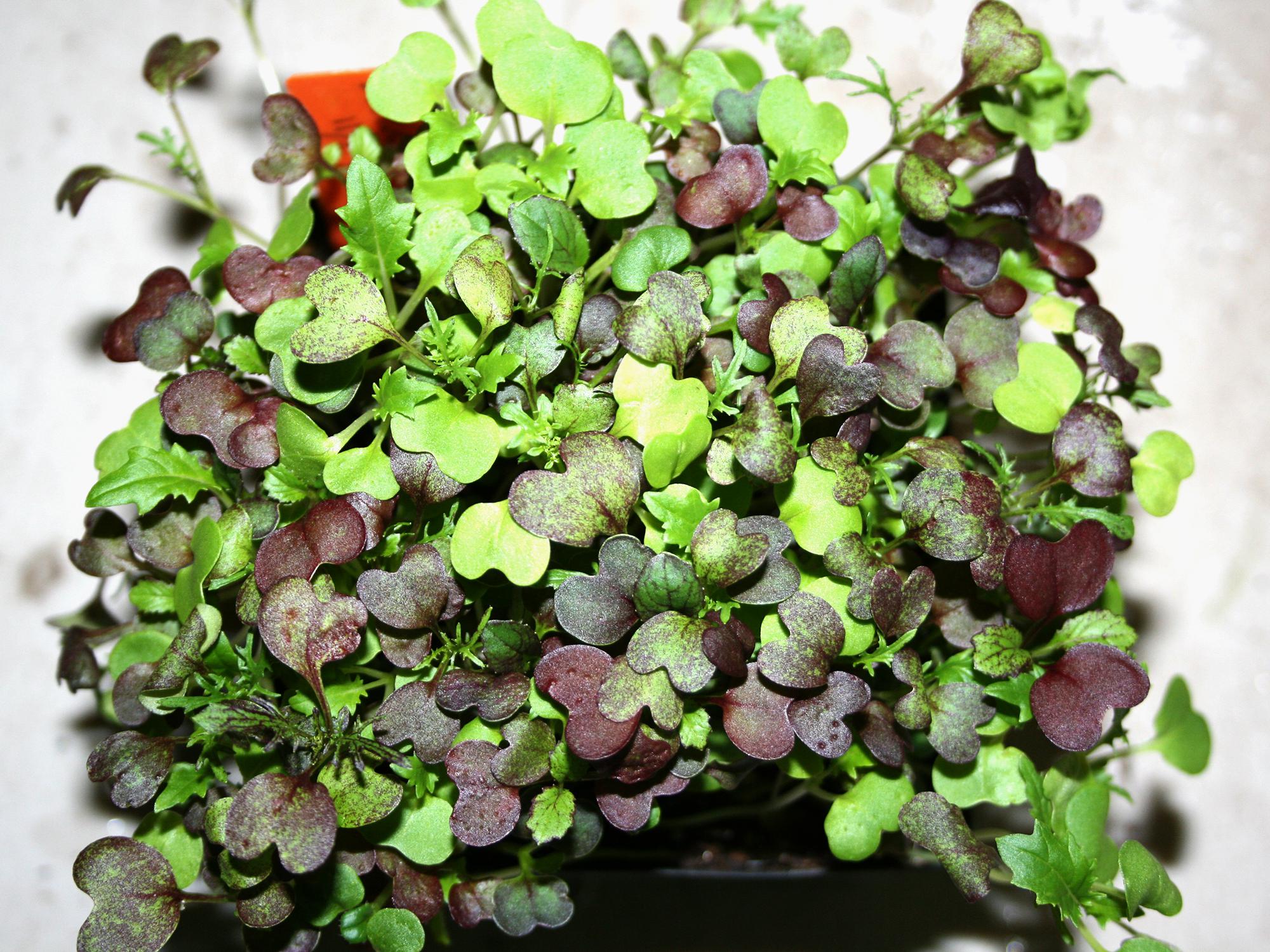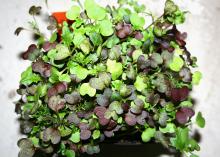Information Possibly Outdated
The information presented on this page was originally released on August 15, 2016. It may not be outdated, but please search our site for more current information. If you plan to quote or reference this information in a publication, please check with the Extension specialist or author before proceeding.
Microgreens are nutritious, grow quickly indoors
Since this is August, we are now officially in the dog days of summer.
Extreme heat and humidity cause lots of problems for both garden plants and gardeners. For those gardeners who enjoy the vegetable garden bounty, this time can be especially troubling, as many of our vegetable plants tend to shut down for a while.
I miss green leafy veggies this time of year. You can’t grow lettuce; it’s way too bitter. My other go-to, kale, is finished for the season.
So what’s a gardener to do? I’ll tell you what I’m doing. I’ve moved the garden indoors -- you know, where air conditioning is. And I’m growing microgreens.
Don’t confuse microgreens with sprouts; they are not the same thing. Microgreens are specific vegetables (usually Asian types) and herbs that are grown as normal plants. Only the stems and leaves are harvested for consumption.
Microgreens are harvested at a young growth stage, usually by the time the plants develop their first leaves. Harvest time ranges from seven to 21 days after germination. The plants are approximately 1 to 3 inches tall.
These greens have a variety of uses. They are used as vegetable confetti to add flavor, texture and color to evening meals. They are added to sandwiches and salads (or eaten as the salad themselves) and are used as colorful garnishes.
Microgreens are rich in phytonutrients, even more than when full grown. Research has shown that certain microgreen varieties can have high concentrations of vitamins C and E, beta-carotene, lutein, zeaxanthin and violaxanthins.
They don’t take up a lot space but can have a big impact at mealtime. Microgreens offer a fun way to add fresh flavors along with tender crunch. I have been growing them for about five years, and they are easy for the home gardener to grow.
Good quality, fresh seed is required to be successful growing microgreens at home. You want to have very even germination, and you need to sow the seed very thickly. Buying packets of seed from the garden center can be a start, but it is impractical in the long term. Seed for microgreen use are readily available in bulk.
You need only a small container that holds a cup or two of growing mix to grow your microgreens. Tupperware or repurposed plastic take-out clamshells work well.
Microgreens can be grouped by the rate of growth after sowing. There are well over 50 different varieties of microgreens available.
I’ve written a couple of Extension publications that will be a great help if you’re interested in growing these delicious and nutritious greens. “Growing Microgreens for the Mississippi Gardener” and “Microgreen Varieties for the Mississippi Gardener” give tips and advice about growing and variety selection. Both are available on-line at http://extension.msstate.edu/publications.
Try planting a couple of small containers a week during the dog days. I’m willing to bet you’ll continue throughout the year.









